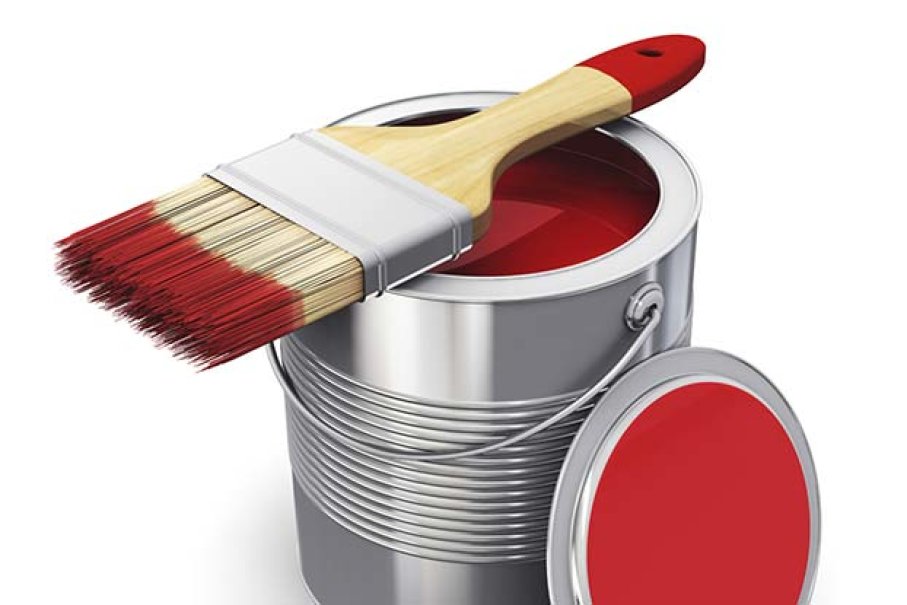On your next inside painting project, religiously follow these simple rules and I guarantee that you will save at least 2 hours. Here we go! 1. Slosh Your Brush Before painting, slosh your brush in whatever solvent you will be using at the end of the day to clean the brush (i.e., water for latex, mineral spirits for oil, etc.) It’ll be easier to clean when you’re done. 2. Wrap Brush or Roller If you don’t feel like cleaning your brush or roller at the end of the day and expect to get back to painting within a few days–wrap the brush or roller tightly in a plastic bag and put in the freezer. 3. Latex Gloves or Lotion, Your Pick Latex gloves are great for keeping your hands clean (especially if you’re using oil-based paint!). If you can’t stand latex gloves or are allergic, a thick application of hand lotion before painting will make cleaning a lot easier later on. 4. Wet Edge Always keep a wet edge as you paint, and work away from that wet edge. If you paint over a dry edge, you will get overlap marks. 5. Avoid Cheap Roller Covers and Brushes This one is important. Cheap roller covers leave fuzz on the wall. Cheap brushes leave streaky brush marks. Avoid those multi-packs of rollers, ten for a dollar. Pay the extra few cents and get better tools. It’ll be worth it. Honest it will. 6. Test for Loose Paint Will the existing painted
On your next inside painting project, religiously follow these simple rules and I guarantee that you will save at least 2 hours. Here we go!
1. Slosh Your Brush
Before painting, slosh your brush in whatever solvent you will be using at the end of the day to clean the brush (i.e., water for latex, mineral spirits for oil, etc.) It’ll be easier to clean when you’re done.
2. Wrap Brush or Roller
If you don’t feel like cleaning your brush or roller at the end of the day and expect to get back to painting within a few days–wrap the brush or roller tightly in a plastic bag and put in the freezer.
3. Latex Gloves or Lotion, Your Pick
Latex gloves are great for keeping your hands clean (especially if you’re using oil-based paint!). If you can’t stand latex gloves or are allergic, a thick application of hand lotion before painting will make cleaning a lot easier later on.
4. Wet Edge
Always keep a wet edge as you paint, and work away from that wet edge. If you paint over a dry edge, you will get overlap marks.
5. Avoid Cheap Roller Covers and Brushes
This one is important. Cheap roller covers leave
fuzz on the wall. Cheap
brushes leave streaky brush marks. Avoid those multi-packs of rollers, ten for a dollar. Pay the extra few cents and get better tools. It’ll be worth it. Honest it will.
6. Test for Loose Paint
Will the existing painted surface take new paint? And hold it for years to come? Test this out by adhering a strip of duct tape to the existing painted surface and…ripping it away. If flakes of paint more than microscopic size come off, you may need to scrape and sand.
7. Low-Stick Masking Tape
Also known as “blue tape,” this tape comes off easier and doesn’t peel off primer or existing paint. Blue tape, by itself, will save you at least an hour of frustration over the old-style beige masking tape.
8. Rein in Your Paint Can Opener
Paint can openers, those little metal keys (you do use one, don’t you?) are notorious for getting lost in the shuffle. Chain it to a small chunk of wood just like a public bathroom key. Whatever you do, just don’t lose it!
9. Painting Process
Paint in this order:
1.Ceiling
2.Walls
3.Trim
4.Cabinets
5.Doors And remember to always paint from top-down!
